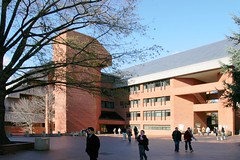During the Covid-19 pandemic, work locations changed for many workers in administrative roles in all sectors of society.
We are several years past the worst of the pandemic, but many corporate leaders are still searching for a balance between on-site work and remote work. Hardly a week goes by without a mention of a company’s CEO changing their mind about the value of bringing all workers back to the office. The Federal government, too, seems not to have reached an equilibrium on this issue.
Of course, there are sectors of the economy with staffs that have been scattered throughout the country for decades. Many consulting businesses have been operating with such a model routinely, while there also exist large offices of centralized staff.
But post-COVID, there is more commentary about inequities that arise when some of the staff are present and some of the staff are remote. There are observations about the advantages that seem to accrue to those staff who choose to be in the office more. They can more easily interact with supervisors in spur-of-the-moment conversations. They are in the room with the meeting leader, while remote staff are on zoom. Some note that promotions seem to go to those workers more often. A challenge to long term cohesion of the work organization results.
Correspondingly, remote staff suffer blurred lines between work and social life. In some sense, they are “always at work.” While the advantage to this is running small errands for the household when needed, the disadvantage is the lack of pressure to focus on work in a restricted set of hours or days. Work is spread over more hours than would be true in the office.
One can easily see how two cultures can develop in such work organizations. Cohesion is threatened; we-they breeches can arise.
At universities, undergraduates on residential campuses are fully present, as they were pre-pandemic, interacting with one another in residence halls and classrooms. In contrast, commuter students and graduate students often come to campus only for the classes and some study groups.
The faculty whose research uses universities laboratories are also onsite for their research and oversight of lab technicians supporting the work. Those whose research are based in university libraries remain on site.
For some decades, however, many faculty have sited all their research materials in their homes. The ubiquity of technology at home enhances the quiet scholarly time there. In contrast, older faculty can remember a pre-email time, and some remember more full-day presence of their colleagues. (At Georgetown, there are memories of a faculty lounge where during-the-day card games were held.)
Compared to faculty, the academic staff, however, are largely still present. Entering a typical department in a school one sees a reception area with support staff present, but few faculty office doors open.
This gulf in universities may pose a similar challenge of multiple cultures that other US work organizations are facing. Those present may tend to feel isolated from those remote. The faculty and staff who are present everyday experience a different work life than those who come only to deliver classes, attend monthly unit meetings, or meet with students. They pass one another in hallways; they look at the pictures of new children or grandchildren. They bump into one another in the unit kitchen. These experiences breed the multi-dimensional connections common to work mates.
The mix of the remote and the onsite deserves attention of those who care about the culture of a university community. It may require some new efforts to keep the social cohesion of the work unit. This is a puzzle facing all universities now, and we should discuss how to recover social cohesion in the new mix of onsite and remote.
Address

ICC 650
Box 571014
37th & O St, N.W.
Washington, D.C. 20057
Contact
Phone: (202) 687.6400
Email: provost@georgetown.edu
Office of the ProvostBox 571014 650 ICC37th and O Streets, N.W., Washington D.C. 20057Phone: (202) 687.6400Fax: (202) 687.5103provost@georgetown.edu
Connect with us via:
Another piece of the puzzle involves deciding whether to treat remote workers as consultants (who equip/supply themselves) or as piece workers (who are provided with tools and materials by their employers) along with addressing the liability/taxation differences between a consultant’s workspace and a piece worker’s workspace and an employer-provided workspace. At present, it doesn’t seem that GU has wrestled with the consequences of employee’s personal space being used for employer’s purposes.
Social cohesion thrives when we genuinely engage with one another, fostering a sense of community and belonging. Being present in our interactions strengthens these bonds and enriches our collective experience.
Good discussion. Difficult important problem. Finding the balance will be interesting and complicated.